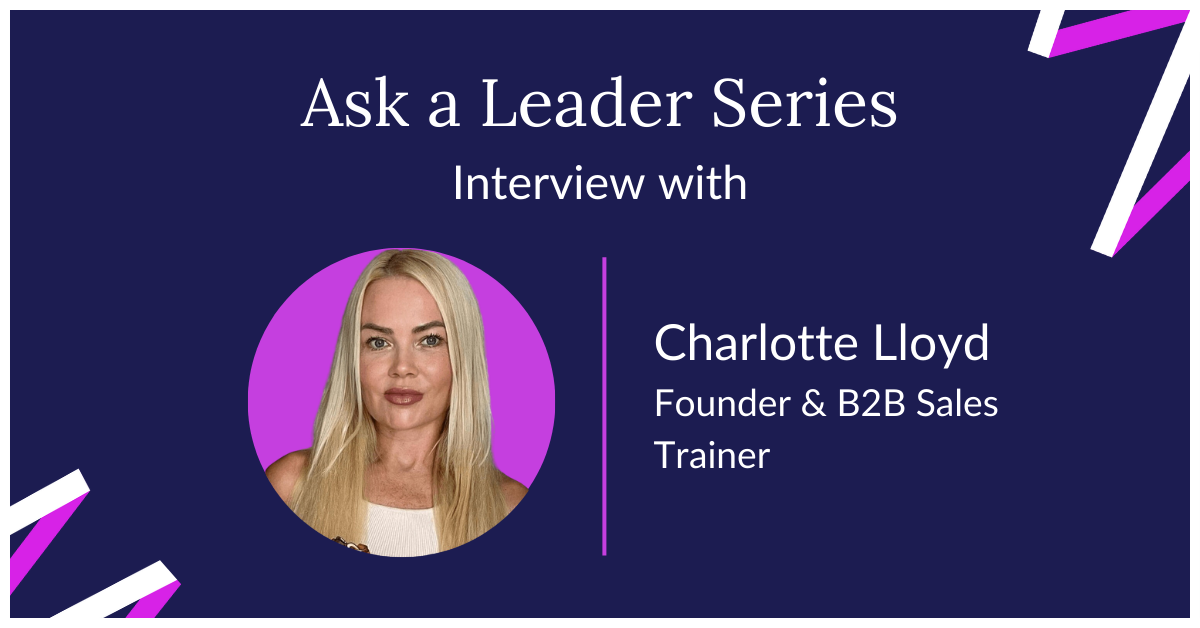In this exclusive interview with Charlotte Lloyd, B2B Sales Trainer and Founder of Charlotte Lloyd Sales Consulting, she shares tips on pre-outreach research, the best way to approach a prospect on LinkedIn, best practices for connection requests, how to avoid mistakes salespeople often make, how to overcome objections, and resources that can help you stay up to date with sales trends.
Interview highlights & key takeaways
What should proper pre-outreach research look like?
According to Charlotte, the goal of the research should be identifying triggers such as company funding, expansions, increased revenue, and new product launches, among others.
1. Identify triggers: Look for specific events or signals that make a company more receptive to your outreach, such as funding rounds, expansions, or new product launches.
2. Segment your outreach: Divide the prospects based on different triggers and personas, ensuring a more organized and tailored approach in your communication.
3. Organize your prospects: Create groups such as “new,” “in progress,” and “priority” to categorize your contacts based on their level of interaction and engagement, helping in streamlining the communication process and prioritizing efforts.
What’s the best way to approach a prospect via LinkedIn?
Charlotte reveals a nuanced approach to LinkedIn outreach, emphasizing the importance of customization based on the activity levels of the prospects. She classifies LinkedIn users into three tiers and provides strategies tailored for each.
Tier one: Hyperactive users
1. Engagement: Begin by engaging with their posts and comments. Build a rapport by being actively involved in conversations that they are a part of.
2. Connection request: Once a level of engagement is established, send them a connection request.
3. Voice note: After the connection is accepted, send a voice note for a personalized touch, enhancing the connection’s quality and likelihood of a response.
Tier two: Semi-active users
1. Shared interests: Engage over shared interests and topics. Utilize their sporadic posts and comments to initiate conversations.
2. Direct messaging: Shift the conversation to direct messages (DMs) where you can discuss more about the challenges and solutions, moving towards setting up a meeting.
Tier three: Lurkers
1. Engagement on reposts: Engage on their reposts which usually have less activity, making your engagement stand out.
2. Specific connection request: When sending a connection request, be very specific and articulate a clear value proposition or solve a pain point in your message.
3. Direct ask: Given their lower activity levels, be more direct in asking for a meeting, ensuring that the outreach is compelling and to the point.
What are some best practices for LinkedIn connection requests?
1. Personalize: Personalize the LinkedIn connection requests to make them memorable and likely to be accepted.
2. Avoid blank requests: When sending out mass connection requests, it may be challenging to personalize, but avoid sending blank ones as they’re not very memorable.
3. Mention previous interactions: Reference any other interactions you’ve had with the person, like emails, make the connection feel more engaging.
4. Avoid generic messages: Sending generic messages such as, “Hey, I came across your profile. I see that you’re a social seller—so am I! Let's connect.” don’t work. Charlotte deletes these types of messages immediately.
What are the biggest mistakes you see salespeople make?
1. Late disqualification: Salespeople often fail to disqualify prospects quickly enough, wasting time on the wrong prospects. If you know a prospect isn’t a good fit, don’t be afraid to disqualify them right away.
2. Drifting from the process: There's a tendency to deviate from the sales process, especially when salespeople get overly enthusiastic or complacent. Do not skip steps to try to jump ahead.
3. Not trying new things: Salespeople sometimes repeat the same actions expecting different results. For example, they think what worked in the previous quarter will work again in the next one. This leads to stagnation.
A tip Charlotte shares is investing in external coaching to continue to improve in your role and enhance performance. This is independent from the internal coaching that is paid for by your company. That way, you’ll be more invested in the training and you’ll gain a lot more out of it.
What’s the most common objection salespeople face today?
The "No budget" objection is the most common sales objection today. Salespeople should empathize, ask open questions to understand decision-making processes, and offer educational insights to keep prospects engaged for future opportunities. They should aim to keep the conversation going and position themselves as helpful, rather than pushing for immediate sales.
How can salespeople stay up to date with sales trends?
1. Interviewing top performers: Learn from top performers both within and outside your organization, and be willing to engage with and ask questions of peers in the industry.
2. Using LinkedIn: Use platforms like LinkedIn effectively, keep conversations flowing, and stay engaged with conversations are great ways to follow trends within the sales industry.



.png?width=450&height=250&name=Episode%20Graphic%20(1).png)
